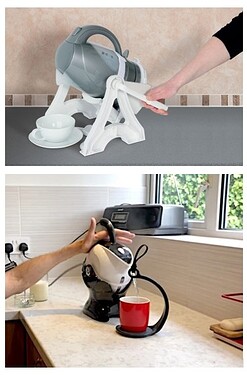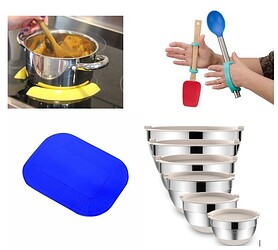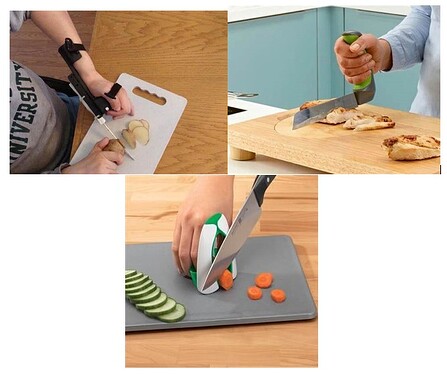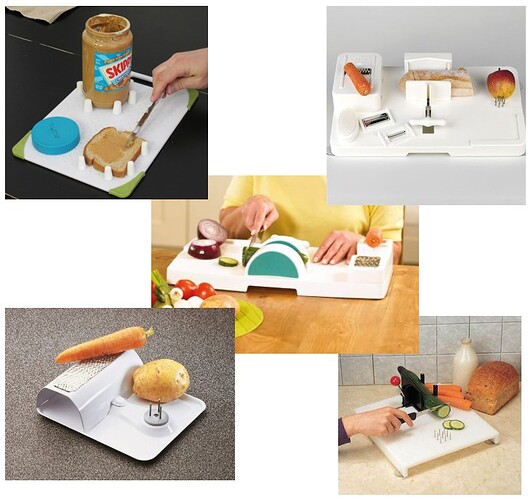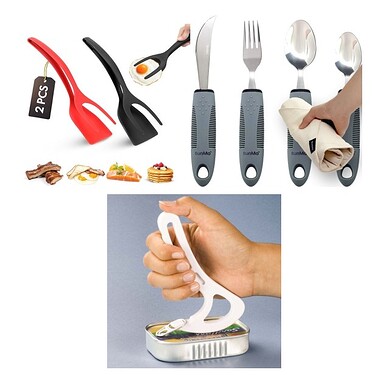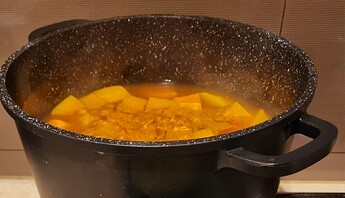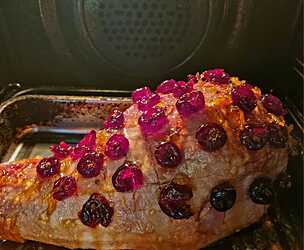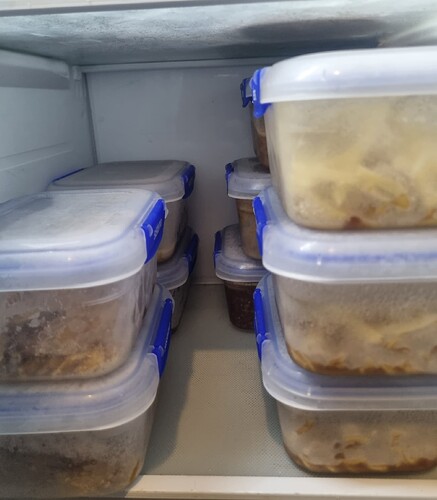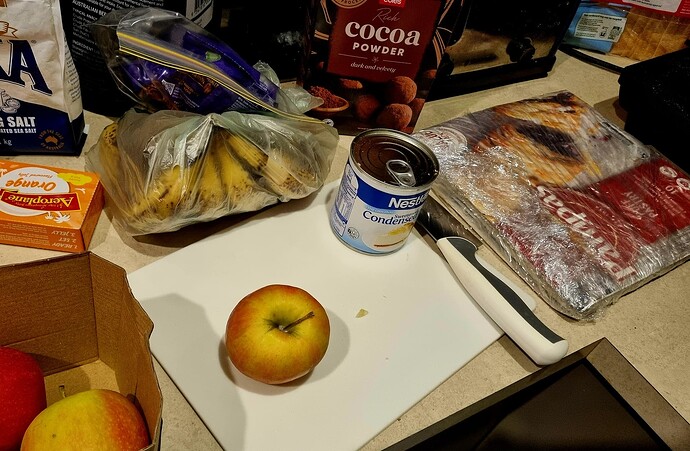If you are not used to it, cooking can sometimes seem overwhelming. This is especially true when you factor in the fact that you need to follow all the steps around the cooking. Find the recipe, make sure you have the equipment, shop for ingredients, prepare the ingredients, actually do the cooking thing, serving or storing, then the clean up.
Most people do not realise the amount of mental load it actually takes and adding a disability to that can make it more of a chore than something fun and delicious. There are things that you can have and do that can reduce that load, outside of having the perfectly designed kitchen because we know that cannot always be the case. By the way if you are just here for tasty recipes you can just skip on down to the bottom.
Planning ahead
I know, I know, this is the tedious part but it is really important because, if you do it well enough the first time, the rest of the times it is so much easier. You should try to figure out if there is a style of cooking you prefer to eat or you find easier to manage.
I am a slow cooker girl for example. I love them, I can throw everything in them and let them do their thing while I am busy and I find they can be versatile. I have to own two, a large and a small one for different meals. If you are someone who likes pasta or soups you will want to have a good set of pots. Pizza trays are not only great for pizzas but you can use them for pastry cooking too. Fry pans for various kinds of frying are another option. The other thing to consider is if you are going to cook small batches every meal, meaning you only need small equipment, or batch cooking to freeze meals for future use, needing Tupperware as well as appropriate cooking equipment.
It is really important that you are aiming for foods you actually like eating and a method of cooking that suits your needs and lifestyle. You don’t want to be wasting food because you aren’t thrilled about it or having loads of useless equipment around the kitchen. Most of us know what normal equipment for cooking looks like, but in the disability and aged care world there are a range of great options to support you in your cooking endeavours as well.
Adaptive Kitchen Tools
In some cases, you may already know what items you need to assist you in the kitchen. If you aren’t sure, or if you don’t really know what options are available to you, you can consult your occupational therapist. Their advice can help you achieve quite a few goals in your culinary adventures and they can tailor advice specific to you and your environment. You can also ask your support workers, although not all specialise in cooking. I am going to run through some common aids to give everyone an idea of what is available to them.
Items for people with eye sight issues
Something that I actually use (especially as I am getting older) are the measuring cups and spoons with the big writing on them. I love them and they make things so much easier visually. The cup version can also be slanted to make pouring easier.
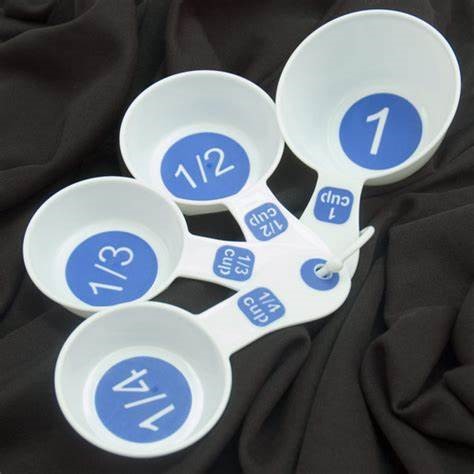
An item that I know exists but have yet to try are the new timers and scales on the market that tell you verbally how much time you have left or how much things weigh. These are not just good for people with visual impairments but the timers can also help people struggling with time blindness and people who have trouble reading in general.
Safer pouring with a tipper
These have been around for a long time and several of my early dementia clients have owned them to protect from burns when making tea, coffee and cup soup. They hold everything steady and keep hands safely out of the way.
Getting the lid off
Anyone who has ever had to get a lid off a jar of pickles and struggled will really appreciate that there are a whole range of options to get this done. From grip handles to one hand openers the range here is pretty endless.
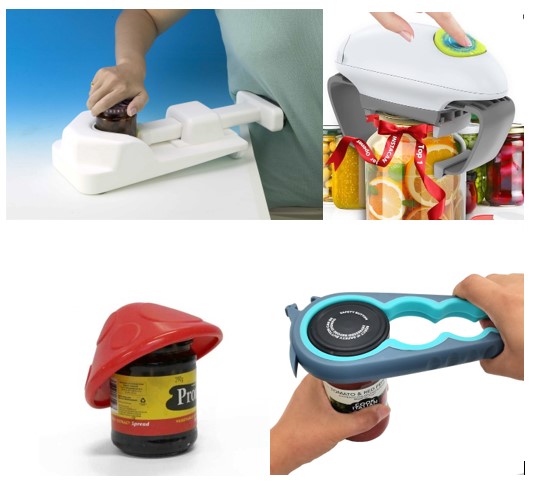
Non slip grip
Something I always recommend for safety are items with non slip bottoms or grip mats to help with holding things steady while cooking. It is great with mixing bowls and chopping boards but the new stove pot grippers are pretty good for preventing hot liquid burns from sliding pots.
Safer chopping for your slice and dice needs
There are two aspects to this. Some people need more ergonomic knives to make chopping less strenuous and to protect their fingers.
Other people find they need a better designed chopping board for unsteady hands or single hand chopping and these often suction cup to your work surface to keep them in place.
Some of these items come with adjustable holds so that you can set them to your exact needs which comes in very handy. You can also use a combination of the two types of option to alleviate strain or just make preparation safer for you.
All about the grip
Lastly remember that just about every kitchen tool comes with different sizes and styles of grips to make things easier for a whole range of issues.
And remember these are just some examples of what is out there and available.
What if the prep is the hardest part?
There are quite a few tasks that some people can find difficult even with the use of aids and adaptations. Things like peeling and cutting a pumpkin, cutting chicken breasts into schnitzel shape, peeling certain kinds of fruits and vegetables.
If you have a family member or carer you can ask them to help with the prep and you could also ask a support worker but it isn’t always an option. One option is to buy the pre prepped ingredients from places like coles and woolies but that can cost more in the long run.
Some butchers are happy to pre dice/slice meat for you when purchasing to meet your needs. There are also some fruit markets where they make fruit salads in store and if you ask nicely they will happily cut some vegetables for you too but they are rare since covid times. Some clients use items like the “slap chop” or food processors to make this process easier for them to do themselves.
If none of those options are suitable, your next stop should be your occupational therapist to come up with a plan that suits your specific needs.
How do I choose recipes?
I usually tell people to start with food they like and find an easy version of it to try. The lemonade scones is a good example because it skips all the butter massaging and goes straight to wrestling with sticky dough.
When I am teaching someone to cook I always stick to recipes that are very step by step and have pictures of each step as some people don’t know all the cooking lingo, and some like the pictures to make sure theirs looks right.
I also like a lot of one pot/pan recipes because it makes the clean up easier.
Something else to consider is nutritional need. I find a lot of people struggle with proteins. Tasteless protein powder can be added to just about everything. If the client needs a pureed diet, I have found my little ninja blender best suited to get the right meal sizes and consistency for most clients.
As you can probably tell I am a little passionate about food. I definitely want it to be something people enjoy doing for themselves and sometimes go on to do for others. Let me know in the comments if you have any questions.
Lets get cooking
mmmm pumpkin
First up, my favourite batch cooked and very freezable pumpkin soup.
Equipment you will need: a large non stick pot, chopping board, knife, spoon, measuring cup, kettle, blender and storage containers
Ingredients: half a butternut pumpkin peeled and cubed, 5 potatos peeled and cubed, 1 sweet potato peeled and cubed, 3 carrots chopped into sections, 1 diced onion, 3 crushed garlic cloves or a heaped tablespoon of jar crushed garlic, a drained can of chick peas. 1 packet of french onion soup mix, 1lt of water in the kettle and 1 lt of either chicken or vegetable stock.
Recipe: use measuring cup to get 1 liter of water and boil in the kettle, then pour water into the pot. Put everything else in your large pot and bring to the boil. Leave to boil for 20 minutes. Turn off the heat and let it cool to make sure it is safe to blend. Spoon solids into your blender. Add liquid to your tastes (less liquid = thicker soup). Blend. Pour into your containers to freeze or a bowl to eat.
You can use cream instead of chickpeas but it does not freeze as well or last as long as the creamless version.
(pre blended soup cooling)
Easy glaze hams for Christmas
This one is my partners favourite and lives under heavy guard until guests arrive.
Equipment you will need: oven mits, deep baking tray, knife, basting brush, small bowl and spoon. Carving knife and fork for serving.
Ingredients: an appropriately sized ham (some butchers will skin it for you if you ask), spray oil, glazed cherries, whole cloves, a jar (350-400g) of orange marmalade (I like the roses brand at woolies but any will do as long as it’s orange), 5 tablespoons of soy sauce.
Recipe: preheat your oven to 180 degrees. Remove the skin from your ham if the butcher hasn’t done it. Score a diamond pattern over the outside of the ham using a knife. Lightly oil your baking tray. Put the ham in your baking tray. Cut the glazed cherries in half and pin one to each diamond on the ham. In a bowl mix the entire jar of marmalade with your soy sauce. Spoon the soyalade mix over the ham. Put ham in hot oven. Cook for 1 hour, opening every 15 minute to spoon the soyalade mix from the tray back over your ham (make sure you use those mits, that tray is hot). Remove from the oven, do one more spoon bath and then let rest until it is time to serve. Carve it into slices and don’t eat the cloves.
(picture set up pre baking)
Tasty spaghetti and meatballs
There is a slow cook proper version of this with red wine but this is the fast less complicated orange juice method I use.
Equipment: large non stick pot for cooking sauce and meatballs. mixing bowl, small pot for pasta. 2 stirring spoons, knife and chopping board if using fresh herbs.
Ingredients: 500g of lean beef mince, 3 cloves garlic or use the crushed garlic in a jar, either the semi dried packet of mixed herbs you buy at the supermarket or fresh basil and oregano to cut up. Paprika. A small bottle of passata, a jar of your favourite red pasta sauce, 1/2 a cup of orange juice, a can of crushed tomato, parmesan, salt to taste, 1 egg, your favourite pasta and water to cook it in.
Recipe: dice up your herbs and garlic if you have them fresh. In your mixing bowl put your mince, herbs, garlic, salt to taste(you can add chilli but I left it out), egg, paprika and a little parmesan and mix it all together well. Roll the mix into balls about the size of ping pong balls. Leave them to the side. In your sauce pot put your passata, crushed tomato, favourite sauce, orange juice and salt to taste. Bring to the boil. Lower to medium heat and add meatballs spreading them around the sauce in the pot. Let that simmer for 20 minutes stirring occasionally. Once meat balls are cooked through turn the heat to low. Boil the water with a bit of salt, add your pasta and cook to the packets directions. Drain the pasta, put some in a bowl. Spoon your meatball sauce over the top and add cheese to taste. Left over meatball sauce can be frozen and reheated.

(this is the start of the slow cooker version)
I think that will do it for this post. I couldn’t decide between banana bread, stuffed capsicum or a slow cooked beef stew but I will save them for another day. Please do share recipes you enjoy too.
